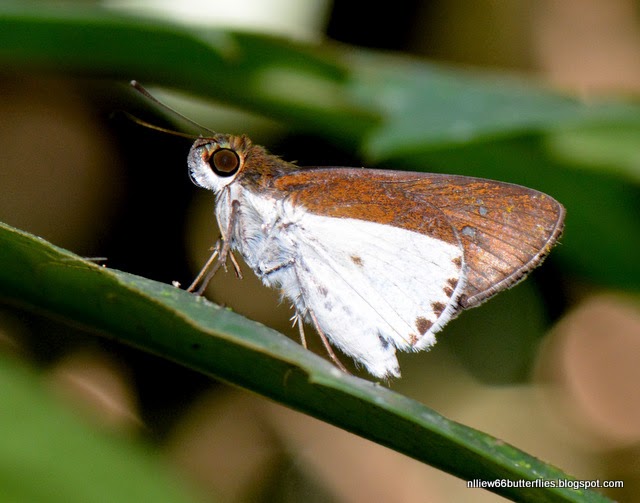This species is easily identifiable by the extensive white area on the HW undersides below the radius and vein 7 (C&P), appearing to be divided obliquely by the white areas on the bottom half and dark brown on the top half with its wings closed. Uncommon despite its name and is commoner in the hills than the lowland where it is confined to undisturbed forests.
31 Jan 2015 @ 11:52
Habitat indicator
RSP
|
WV
|
PG
|
VF
|
FTR
|
SC
|
LWDF
|
LWPF
|
LMEF
|
UMN
|
MN
|
x
|
x
|
x
|
x
|
Frequency observation chart: (S marks the usual occurences, H marks an unusually high occurence, F for first record)
2013
| |||||||
Mac
|
Apr
|
May
|
Jun
|
Jul
|
Aug
|
Sep
|
Oct
|
S5(F)
| |||||||
2013
|
2014
| ||||||||||
Nov
|
Dec
|
Jan
|
Feb
|
Mac
|
Apr
|
May
|
Jun
|
Jul
|
Aug
|
Sep
|
Oct
|
2014
|
2015
| ||||||||||||
Nov
|
Dec
|
Jan
|
Feb
|
Mac
|
Apr
|
May
|
June
|
Jul
|
Aug
|
Sep
|
Oct
|
Nov
|
Dec
|
S1
|
S1
|
S1
|
S1
|
S1
|
S3
|
S3b
| |||||||
|
2016
|
|||||||||||
|
Jan
|
Feb
|
Mac
|
Apr
|
May
|
Jun
|
Jul
|
Aug
|
Sep
|
Oct
|
Nov
|
Dec
|
|
|
|
|
|
|
|
|
|
|
|
|
|
Above photos of a lone specimen visiting the flowers of Ipomea at an elevation above 3000 feet: 25 May 2013 @ 10:42
Above photos 08 Feb 2015 @ 12:02-12:03
* * * * *
12:54
12:54
12:57
Above photos 01 Mac 2015













No comments:
Post a Comment